Abstract
Human peripheral blood lymphocytes were cultured in several concentrations of each of several cephalosporins. Responses to phytohemagglutinin were compared with that of duplicate cultures containing penicillin-streptomycin, chloramphenicol, or no antibiotics. Possible effects of cephalosporins on responses of lymphocytes to concanavalin A and pokeweed mitogen were similarly determined. Significant suppression of responses to phytohemagglutinin and concanavalin A were seen in cultures containing 50 microgram each of cephalothin, cephalexin, or cephradine per ml. Lymphocyte responses to pokeweed mitogen were suppressed by 50 microgram of cephalexin, cephradine, or cefoxitin per ml. A higher concentration (100 microgram/ml) of all cephalosporins except cefoxitin and cefazolin suppressed the phytohemagglutinin response to less than 20% that of controls. Chloramphenicol (50 microgram/ml) did not inhibit the response to any mitogen used. These findings suggest that cephalosporins should not be used for prevention of bacterial overgrowth in certain cell cultures. Since many of the cephalosporins were suppressive in therapeutically attainable concentrations, these results may have potential clinical significance.
Full text
PDF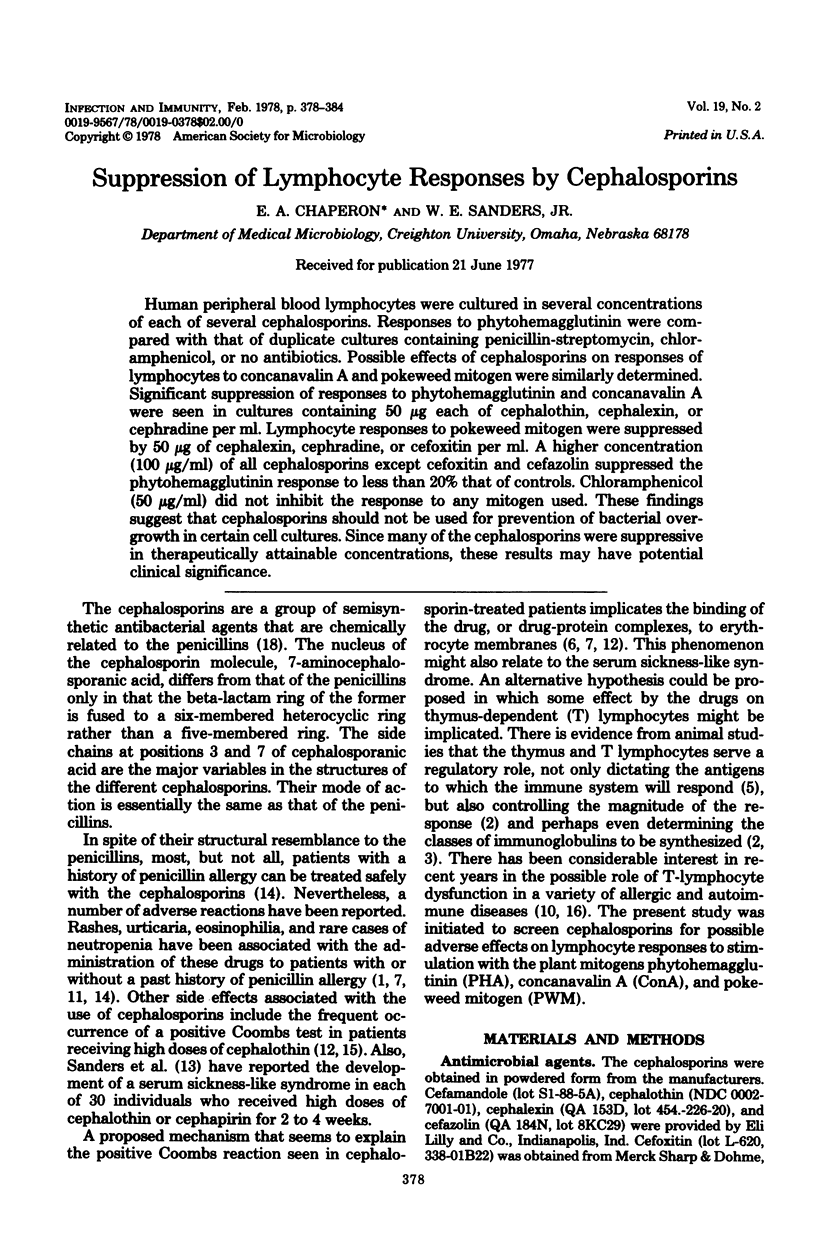
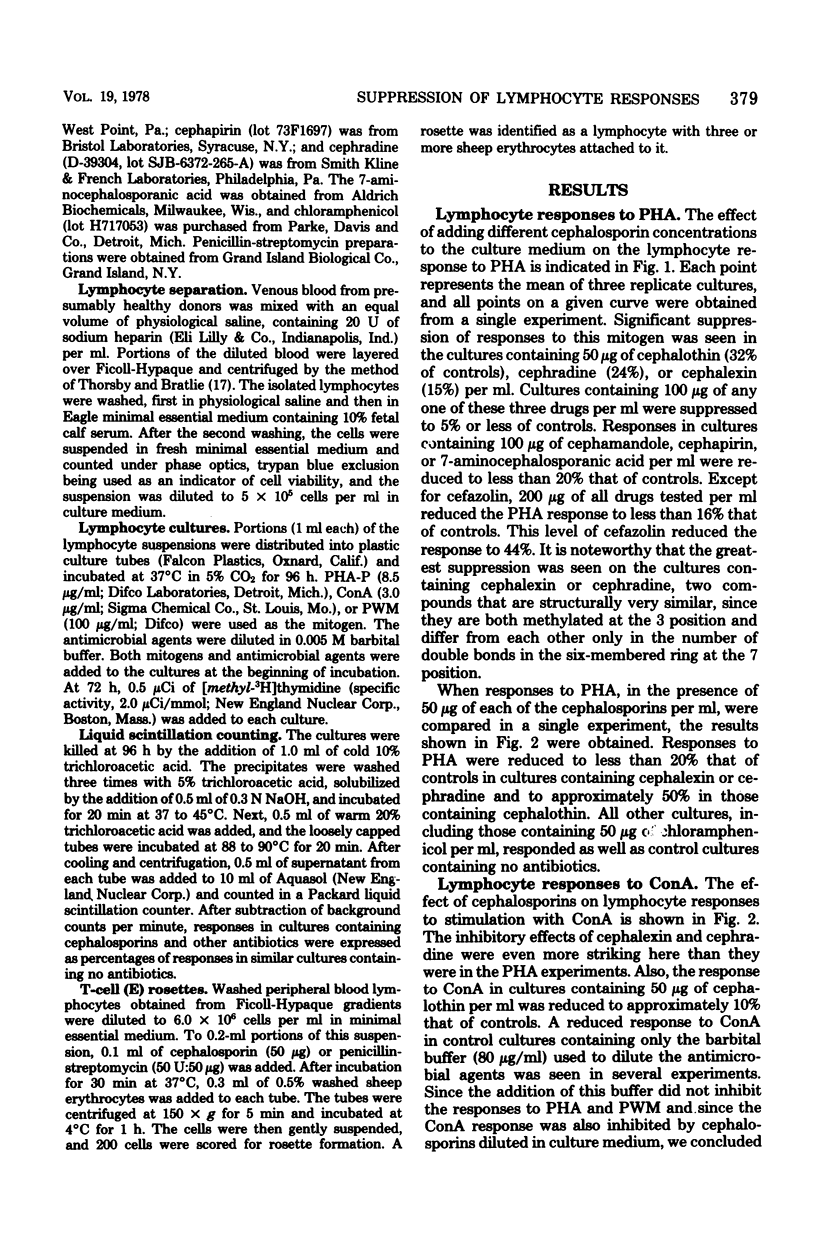
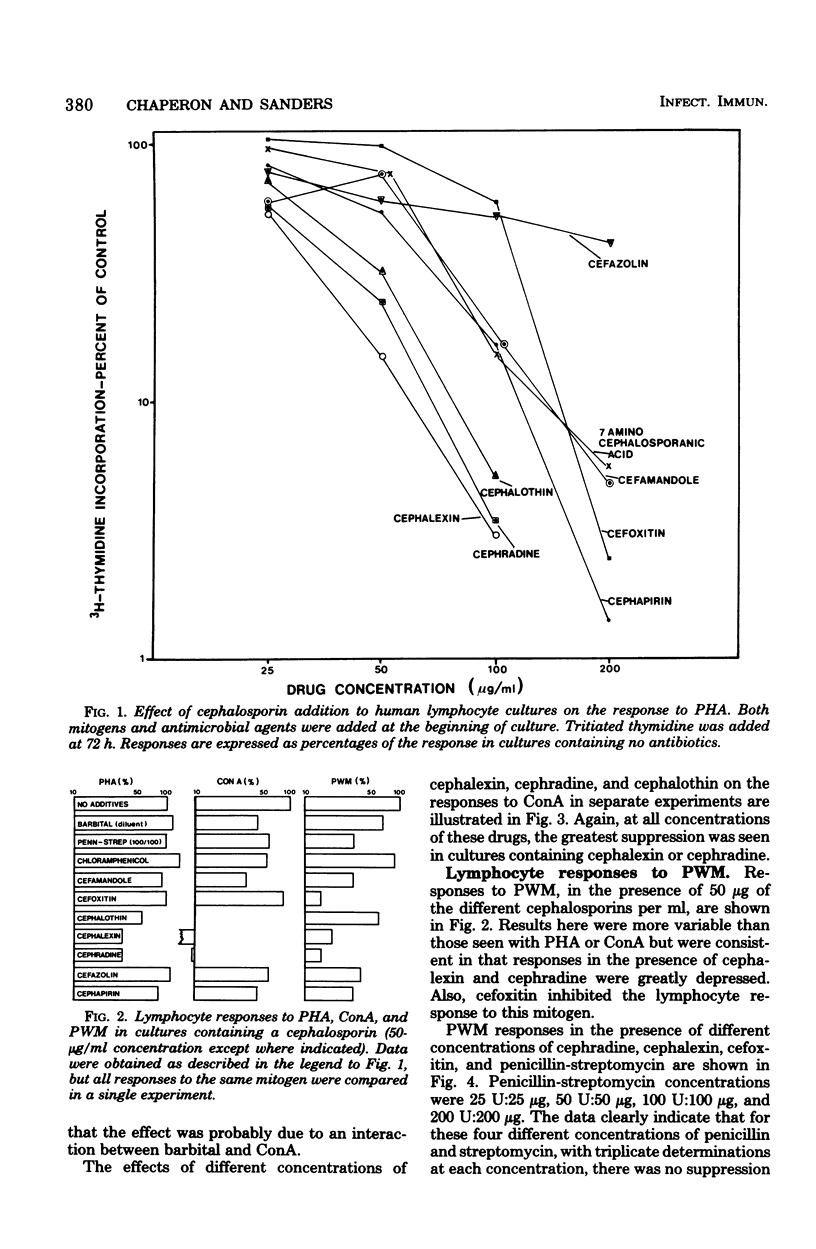
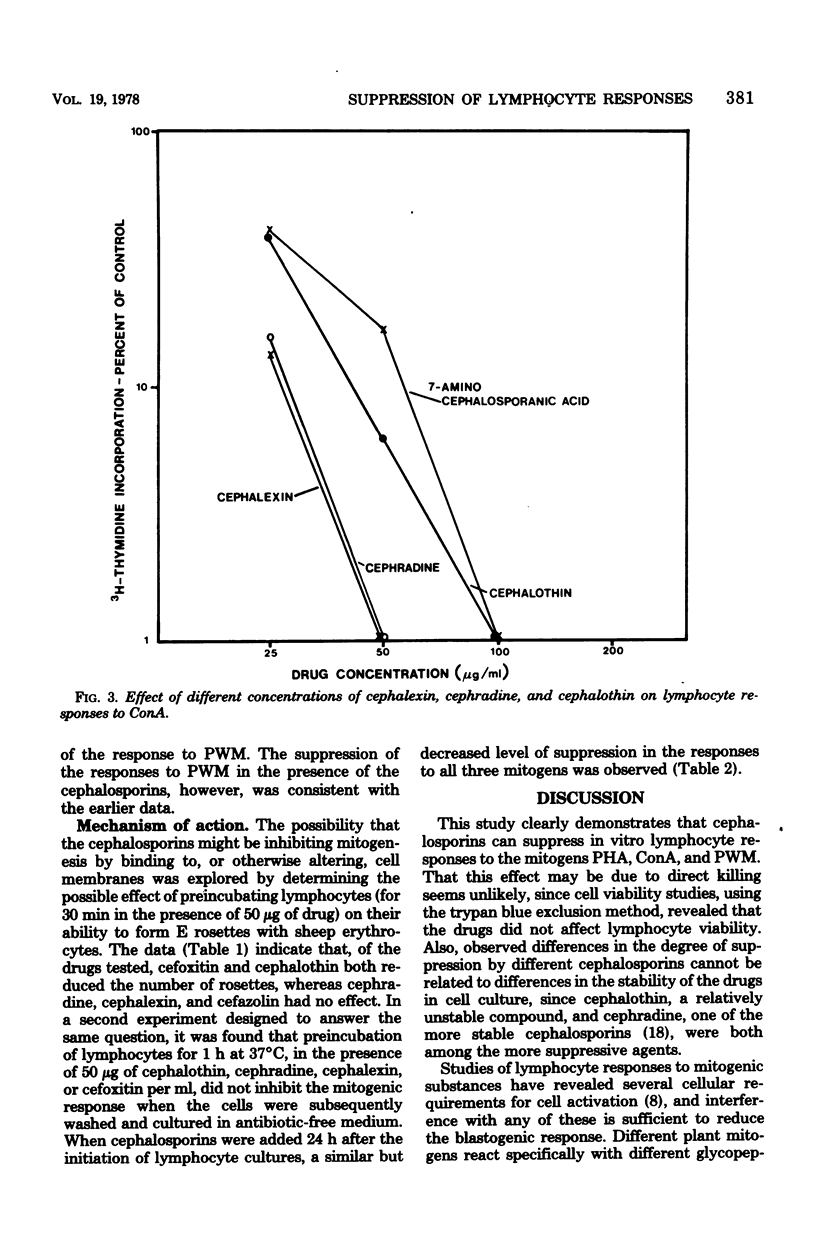
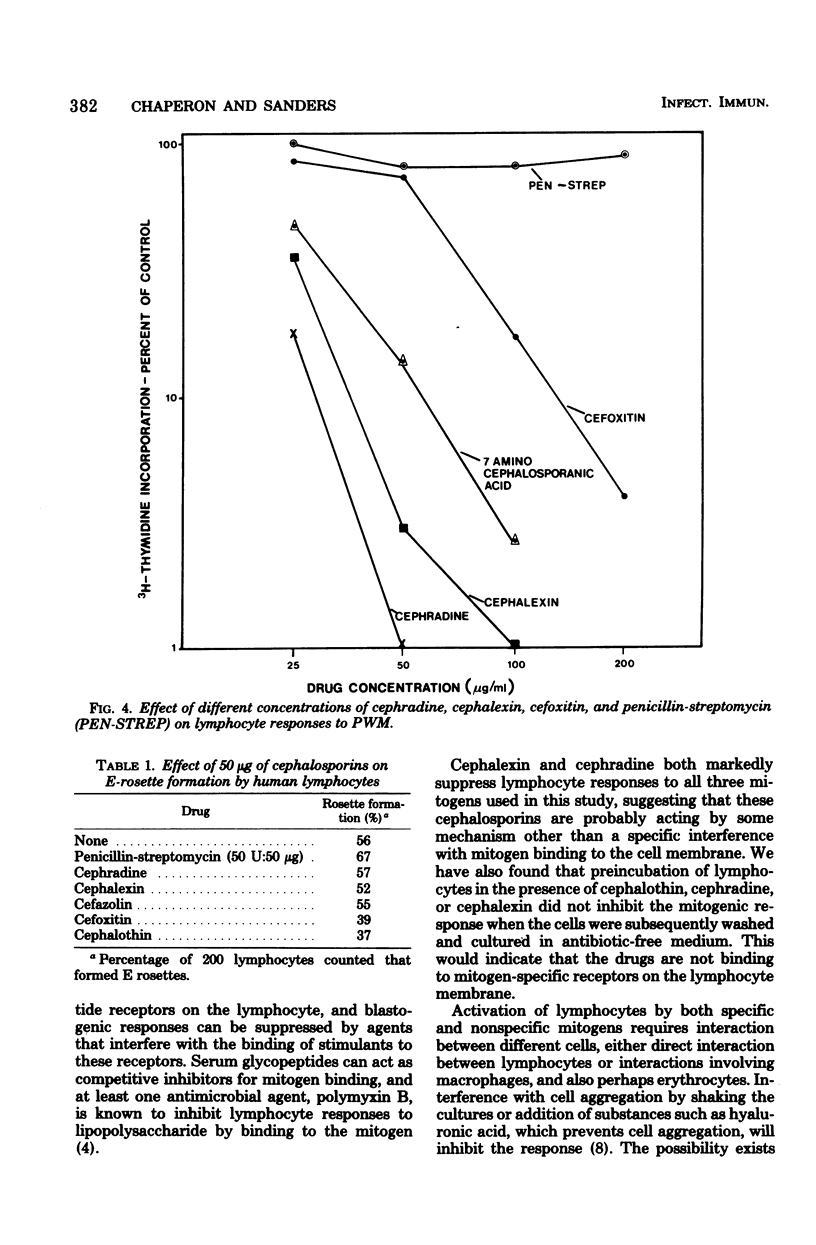
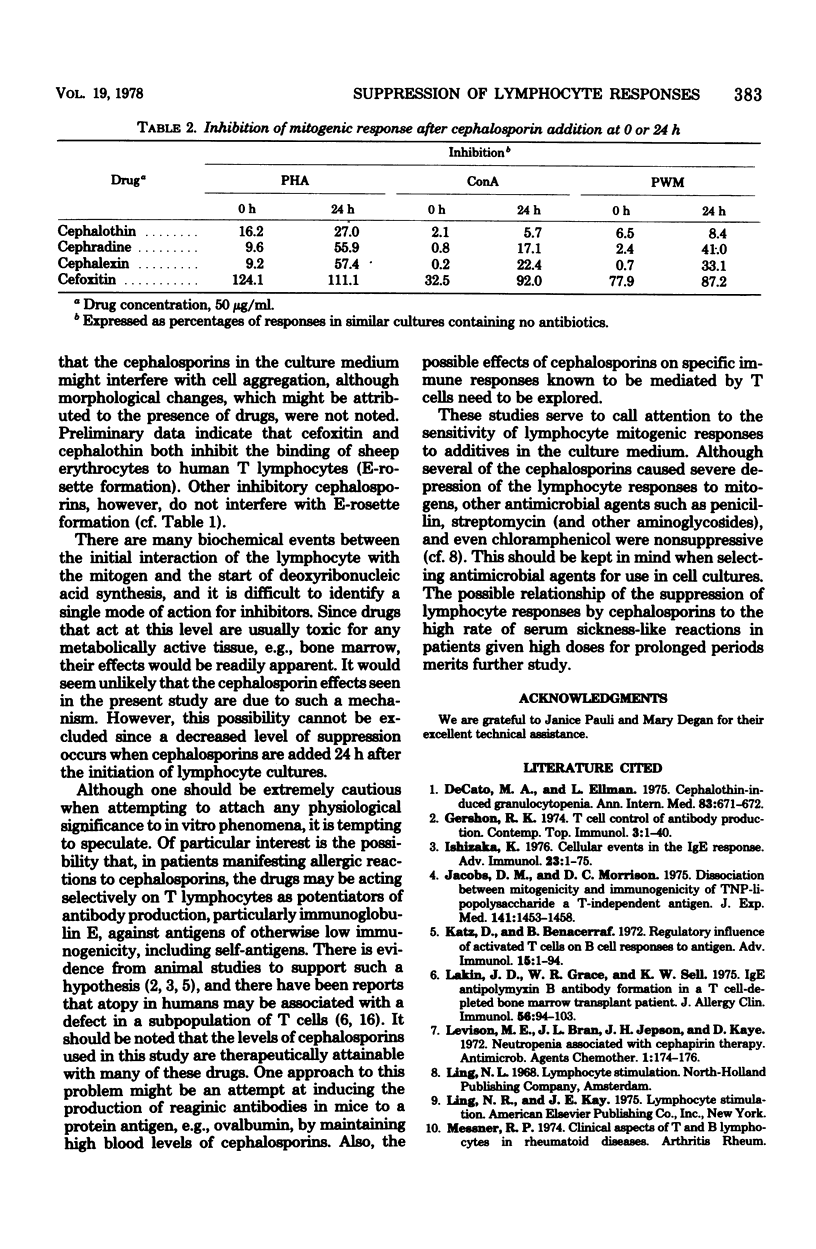
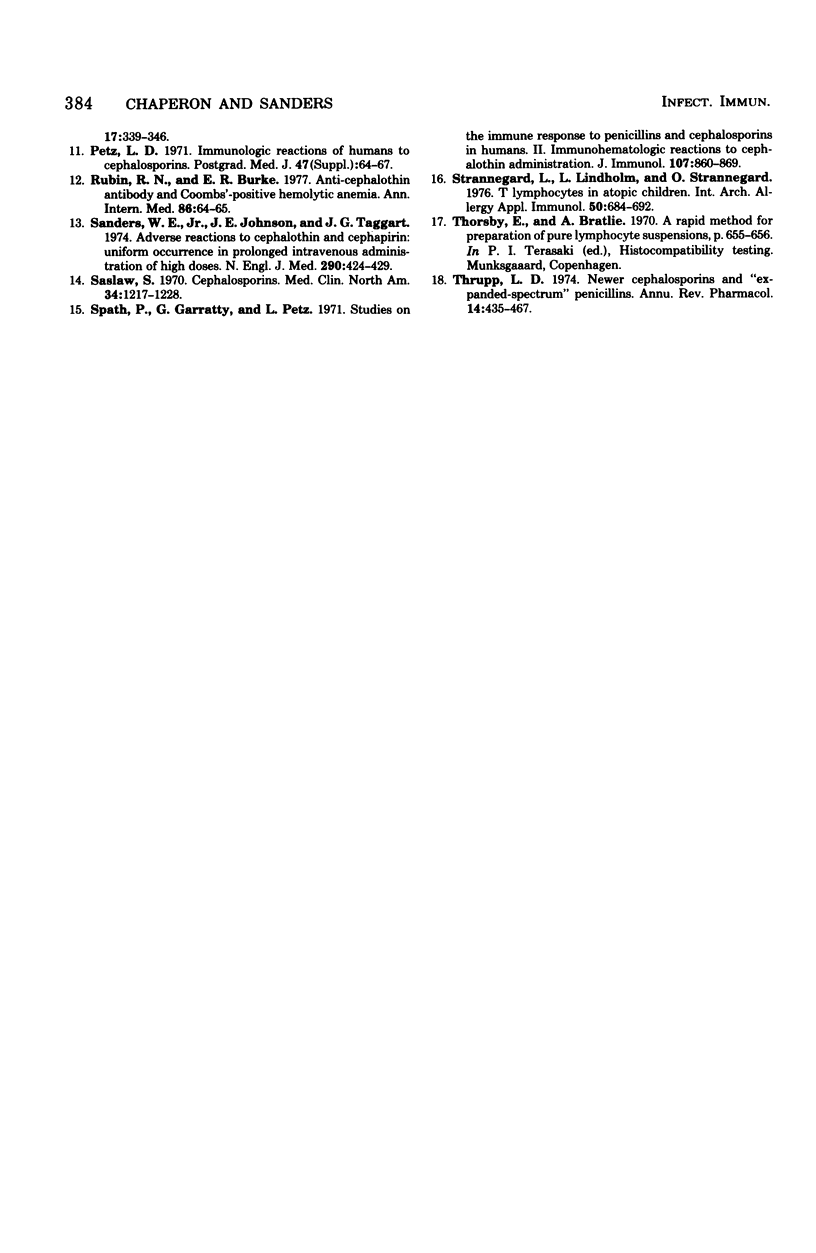
Selected References
These references are in PubMed. This may not be the complete list of references from this article.
- DiCato M. A., Ellman L. Letter: Cephalothin-induced granulocytopenia. Ann Intern Med. 1975 Nov;83(5):671–672. doi: 10.7326/0003-4819-83-5-671. [DOI] [PubMed] [Google Scholar]
- Gershon R. K. T cell control of antibody production. Contemp Top Immunobiol. 1974;3:1–40. doi: 10.1007/978-1-4684-3045-5_1. [DOI] [PubMed] [Google Scholar]
- Jacobs M. D., Morrison D. C. Dissociation between mitogenicity and immunogenicity of TNP-lipopolysaccharide, a T-independent antigen. J Exp Med. 1975 Jun 1;141(6):1453–1458. doi: 10.1084/jem.141.6.1453. [DOI] [PMC free article] [PubMed] [Google Scholar]
- Katz D. H., Benacerraf B. The regulatory influence of activated T cells on B cell responses to antigen. Adv Immunol. 1972;15:1–94. doi: 10.1016/s0065-2776(08)60683-5. [DOI] [PubMed] [Google Scholar]
- Lakin J. D., Grace W. R., Sell K. W. IgE antipolymyxin B antibody formation in a T cell-depleted bone marrow transplant patient. J Allergy Clin Immunol. 1975 Aug;56(2):94–103. doi: 10.1016/0091-6749(75)90113-x. [DOI] [PubMed] [Google Scholar]
- Levison M. E., Bran J. L., Jepson J. H., Kaye D. Neutropenia associated with cephapirin therapy. Antimicrob Agents Chemother. 1972 Feb;1(2):174–176. doi: 10.1128/aac.1.2.174. [DOI] [PMC free article] [PubMed] [Google Scholar]
- Petz L. D. Immunologic reactions of humans to cephalosporins. Postgrad Med J. 1971 Feb;47(Suppl):64–69. [PubMed] [Google Scholar]
- Rubin R. N., Burka E. R. Anti-cephalothin antibody and Coombs'-positive hemolytic anemia. Ann Intern Med. 1977 Jan;86(1):64–65. doi: 10.7326/0003-4819-86-1-64. [DOI] [PubMed] [Google Scholar]
- Sanders W. E., Jr, Johnson J. E., 3rd, Taggart J. G. Adverse reactions to cephalothin and cephapirin. Uniform occurrence on prolonged intravenous administration of high doses. N Engl J Med. 1974 Feb 21;290(8):424–429. doi: 10.1056/NEJM197402212900803. [DOI] [PubMed] [Google Scholar]
- Saslaw S. Cephalosporins. Med Clin North Am. 1970 Sep;54(5):1217–1228. [PubMed] [Google Scholar]
- Spath P., Garratty G., Petz L. Studies on the immune response to penicillin and cephalothin in humans. II. Immunohematologic reactions to cephalothin administration. J Immunol. 1971 Sep;107(3):860–869. [PubMed] [Google Scholar]
- Strannegård I. L., Lindholm L., Strannegård O. T lymphocytes in atopic children. Int Arch Allergy Appl Immunol. 1976;50(6):684–692. doi: 10.1159/000231547. [DOI] [PubMed] [Google Scholar]


